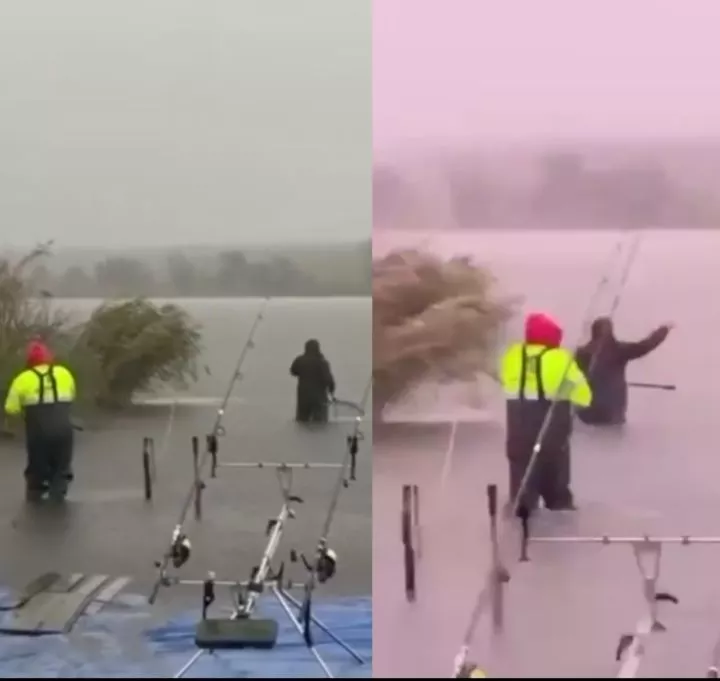![There are many legends about death on board planes [iStock] There are many legends about death on board planes [iStock]](https://static.netnaija.com/i/r9KYzZp07q6.webp)
Emergency situations related to passenger health are not unusual during flights.
Of course, the crew is well trained in first aid and has access to medical equipment, which is usually sufficient to improve the health of someone who feels unwell on board. But what happens when it turns out that the passenger cannot be helped?
Death often comes at the least expected moment, such as over a year ago, when a 10-year-old girl on board a Delta Airlines plane suffered a heart attack. The plane then returned to Los Angeles airport. Unfortunately, despite immediate rescue operations, the child's life could not be saved. We asked the stewardesses what to do in such a situation.
"If we realise that the situation is serious, the captain decides to take the so-called diversion, i.e. a stopover at the first appropriate airport, and the rescue services are informed well in advance about our arrival," explains Martyna Tchórz, a Ryanair stewardess.
As one of the authors of the Flying Locas vlog explains in an interview with Onet, there's an announcement asking whether there is a doctor on board. If one is found, he is asked to take over the care of the patient.
"We always have to ask if he has papers confirming his profession, if he doesn't have them with him - he can only act with the consent of the captain, who still assesses the situation and decides whether to make a stopover. It is very important that flight attendants cooperate and provide appropriate, specific information to the cockpit, with which we are in constant contact.
"We have first aid kits, oxygen on board, and recently AED, i.e. equipment that helps with the countdown and pace of heart massage," explains the on-board employee.
Is it always necessary to interrupt a flight?
Mainly in serious situations, a stopover takes place so that the patient can be transported as quickly as possible to doctors equipped with appropriate and more professional equipment than the one on board.
As Martyna Tchórz explains, on-board employees then provide detailed information about the entire incident and the steps taken so that the rescue services can take the most appropriate actions.
"During our flight together, we had a patient suffering from a heart attack, there was a stopover in Milan and the man was taken over by the emergency services, as we were later informed - we managed to save him, we continued the flight only with a 25-minute delay for the stopover.
"Typically, people suffer from panic attacks caused by pre-flying medication, fainting, or diabetic problems. Fortunately, serious health issues occur sporadically," she adds.
Death on board
During one of the flights from Germany to Palma, one of the passengers lost consciousness. The crew then began a rescue operation. Unfortunately, there was no doctor on board.
"Since we are trained in first aid, heart massage, etc. - after assessing the symptoms and severity of the condition - it was decided to perform heart massage (30 compressions, 2 inhalations).
"The procedures are such that even if we see that a passenger has died during the rescue operation, there is loss of body fluids proving this, a pulse is not felt, etc., we still have to continue CPR (cardiac massage) until landing and death is confirmed by a certified doctor," says a Ryanair employee in an interview with Onet.
Prepared for every situation
Before deck workers start working, they must complete a preparatory course that lasts almost two months. In addition to learning procedures, future stewardesses and stewards are trained in first aid.
"Before each flight, we randomly meet with the crew 45 minutes before the flight to discuss the day's plan and refresh our knowledge - the cabin chief randomly asks us about various issues," emphasises the stewardess.
Although there are no official statistics on such accidents on board aircraft, it is estimated that there are not many of them. The girls who work on board have many years of experience behind them, but fortunately they have only experienced one such serious situation.
Facts or myths?
There are many legends about death on board planes. According to British Airways procedures, cabin crew were supposed to strap the deceased in, put a sleeping mask over his eyes and serve him a gin and tonic, telling him that the passenger needed to rest because he was very tired.
Although this custom is apparently no longer practiced on board this airline's planes, the stewardess explains that she has never heard of anything like this and that it is currently impossible.


















Comments